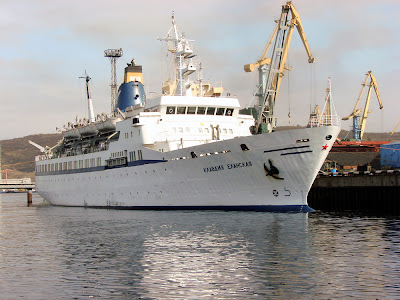There is more to Russia than the elegant cityscapes of St. Petersburg and Moscow, or the huge rivers that carve through the green countryside of the south, down to the sunny Black Sea coast.
There is much more: the Russian Arctic Circle stretches almost half way around the world, and is home to a population of around two million. Most of them are ethnic Russians, but a sizeable minority of them are indigenous people, many of them still trying to live in the ways their ancestors have lived for generation upon generation.
Indigenous People
The indigenous people of the Arctic Circle come from several different tribes, some of which are indigenous to Russia, others of which (like the Sami) are spread over other parts of the Arctic Circle, particularly Scandinavia. Arctic tribal people were once nomadic, but most are now settled. A few still make their living moving across the tundra, herding reindeer and hunting, but their way of life is dying out as younger people move to the cities to seek work. Even those who are settled still live mostly in the natural world: hunting, fishing, herding and farming.
The story of these tough people has always been one of struggle for survival. Today, their struggle is harder than ever. Not only do they still battle to eke out a living in the harsh northern winter, but they battle the encroachment of the modern world too. Climate change is altering ancient ways of life by changing the environment. Warmer weather brings changing agricultural and hunting patterns and reduces the supply of animals and fish (such as seals) that rely on sea-ice cover. Industrialisation has also taken its toll, forcing some indigenous people off the land. Having lived according to predictable patterns since ancient times, life is changing for Russia’s indigenous arctic people. However, their story is one of survival and adaptation against the odds, so it may be that they will still have a future.
Cities and Industry
The Arctic Circle is rich with minerals, and Russia is beginning to take advantage of it, as their neighbours have done. The Russian government is drilling for oil and gas, hoping to take advantage of the rich pickings under the ice. Billions of barrels of oil are thought to be buried in Russia’s Arctic. The oil drilling is controversial, with environmentalists and indigenous people fearing it will further damage the delicate Arctic ecosystem. It may also breathe new life in to the region’s flailing economy. Half-a-million people live in the city of Murmansk, the largest city anywhere in the Arctic Circle. The city’s economy has struggled since communism collapsed, with its fishing industry in particular struggling. Previous resource development in the area did not benefit it, but damaged it, with both indigenous and non-indigenous people seeing falling employment and a bleak future. The hope of the people of the area is that they will be able to start to take advantage as government policy changes.
The Arctic Future
The Russian government sees the Arctic as vital to its future, both economically and militarily important. The Arctic Circle’s cities were built by the Soviets, and have since been neglected, but they are undoubtedly part of Russia’s economic future. Whether the rewards are seen by the people of the Arctic remains to be seen.
For visitors, the Arctic Circle can be a fascinating, if difficult, place to visit. It's easier to arrange car hire in Lanzarote than get from A to B in one of Earth's most hostile areas, and mod cons aren't to be expected. But if you want to experience huge wildernesses, cities covered in feet of ice for many months of the year, and to meet some of the world’s last nomadic people, a visit to the Russian Arctic Circle might just be worthwhile.






No comments:
Post a Comment